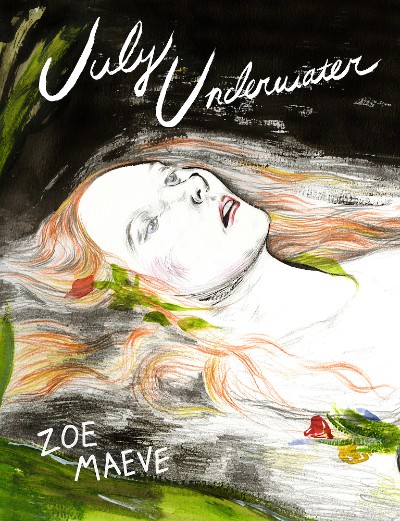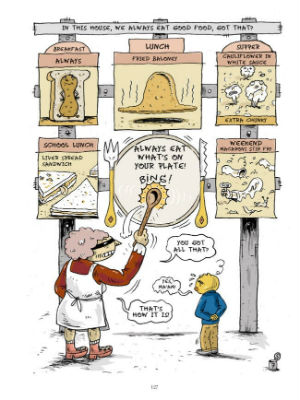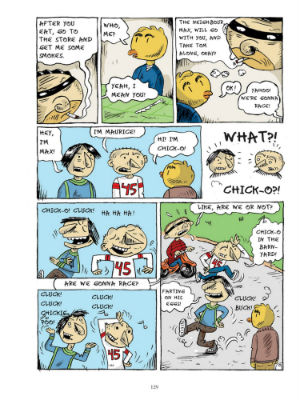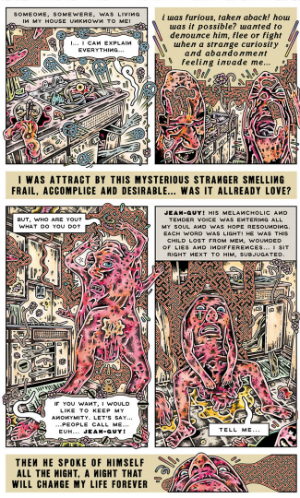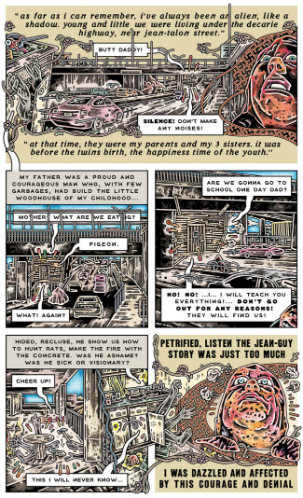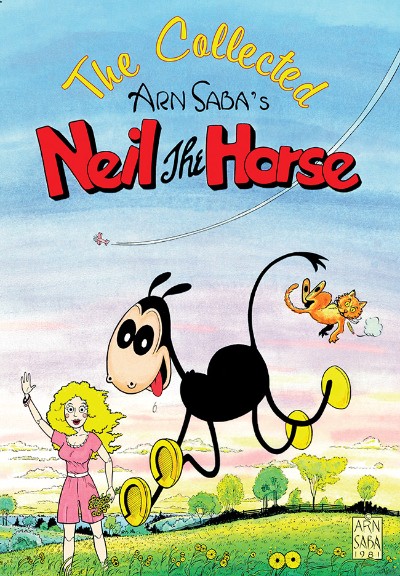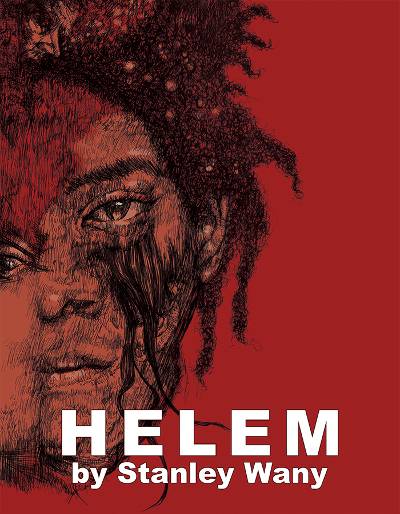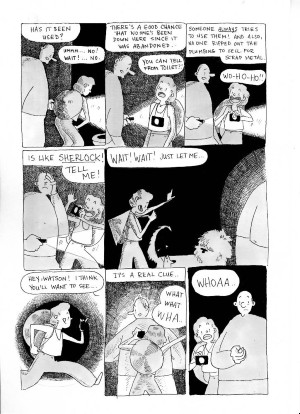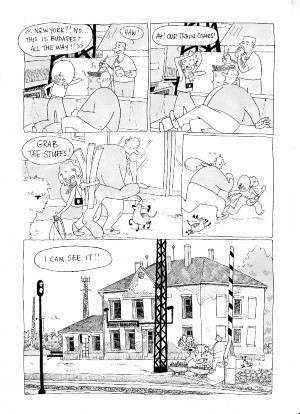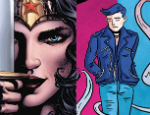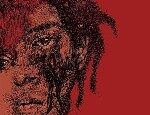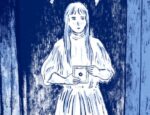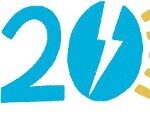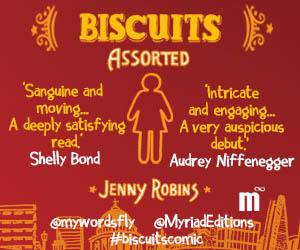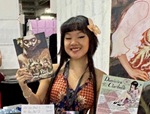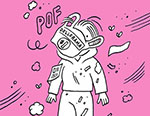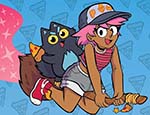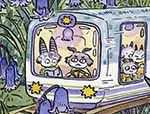
BROKEN FRONTIER AT 20! Publishers with an eclectic catalogue of comics work always appeal to us here at BF, and publishers with a consistently excellent eclectic catalogue of comics work all the more so. We’ve been covering the output of Canadian publisher Conundrum Press for some years here on the site but with a Thought Bubble appearance looming we are delighted to be able to also present this comprehensive interview with Conundrum’s Andy Brown, as part of our 20th anniversary coverage.
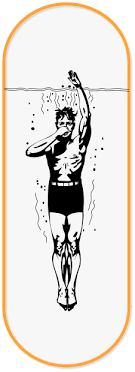 ANDY OLIVER: Conundrum was founded back in 1996 so let’s begin with asking you about the origins of the press and its 2010 evolution as solely a publisher of literary graphic novels?
ANDY OLIVER: Conundrum was founded back in 1996 so let’s begin with asking you about the origins of the press and its 2010 evolution as solely a publisher of literary graphic novels?
BROWN: I had been living in Montreal since 1991 among the arts community, which at first meant writers who were associated with Concordia University. I was freelancing whatever I could. In needs to be understood that for someone who cannot speak perfect French job prospects are very meagre in Quebec. Then the 1995 referendum happened, which was a vote to decide if Quebec would leave Canada and become independent. It was very close, like 50.5% to 49.5% in favour of staying. The anglophones were blamed and many businesses fled. Those who stayed were willing to go deep underground and create their own culture. I was among them. So the fact that Conundrum was founded in 1996 in Montreal needs to come with the knowledge of these specific conditions.
At first, I was making chapbooks for my writer friends, attending “spoken word” events, keeping the books stapled and cheap, but as unique as I could. I met cartoonist Billy Mavreas, who was drawing all the posters for an event called YAWP, and we made a book of his posters. He introduced me to the comics community, including a lot of francophone artists. They were influenced by a mix of American underground comix, but also a steeped in the Franco-Belgian tradition. Seeing this work blew my mind. So, I began to have some of it translated and made comics too.
I started getting Canada Council for the Arts publishing grants so I could make books with spines but kept the content very eclectic: novels, short stories, collections of zines, comics. At one point I served on a jury and observed my fellow jurors were very concerned with editorial mandates and a focused editorial vision. I saw the writing on the wall, and so with the rise of the popularity of the graphic novel (they had a section in the bookstores by 2010), and this knowledge about how my grant proposals were being perceived I went all in with comics. Best decision I could have made for sure.
‘July Underwater‘ by Zoe Maeve
AO: Defining terms in comics always seems to be something of a contested question. How would you differentiate “literary graphic novels” from other categorisations used in the medium?
BROWN: Well, when we look at the concept of the “novel”, which didn’t exist until Clarissa in 1748, which was controversial because it was replacing poetry, there was no concept of it as “literature”. Now the term novel can be applied equally to the Booker winner or a Harlequin romance. In the same way the graphic novel can refer to fantasy or superheroes, or the deep personal expression of a creator (no Booker though). So, I was hoping to separate what Conundrum publishes from other forms of the graphic novel to which it has zero connection. And I believe every book I publish is literary, however that is defined. To me it means there is a written component that is a strong as the art component. Written does not need to be with words either. I guess I mean narrative as expressed through words and images. We are just at the beginning of defining a canon for this, and I’m excited to be part of the conversation.
From ‘The Vagabond Valise‘ by Siris
AO: From championing Canadian comics and creators to bringing international artists to new audiences Conundrum Press has always had one of the most refreshingly eclectic catalogues of books. How would you describe your ethos as a publisher? What are your criteria in terms of curating the line?
BROWN: This is a difficult question to answer. Again, it comes back to the literary. In some ways it is like asking Bob Dylan why he writes one song and not another. It just happens. I assemble a lot of projects in my head, where they exist before even the artist has conceived of it. This used to happen more when there were less artists making graphic novels and I had to take what they were already doing and make a book out of it. Then to market it I needed to call it a graphic novel. But really it is undefined.
Now there are so many more artists working in the field, and of course a HUGE amount of material that has never been translated. It really struck me when I was in Angouleme for the first time and foreign publishers were showing me amazing work that was translated in 8 languages, but none of them were in English. But thanks for using the word “curate” which has become a buzz word for so many things but also really describes what I do. I see publishing as an art form, so curating is part of the process of picking and assembling art, which happens to be contained in the vessel of a codex. Or “anthologizing” Maybe my whole career is the process of making one big anthology.
Pages from Henriette Valium’s ‘The Palace of Champions‘
AO: Conundrum Press has introduced me to creators like the late Henriette Valium and provided new editions of important work like Katherine Collins’ Neil the Horse but on the flip side of that how important is discovering, championing and showcasing new talent to you?
BROWN: Publishing the under-represented has always been an important part of what I do. Valium and Katherine Collins are relatively unknown, all things considered, but deserve a place at the (head of the) table. They are two good examples of artists who produced an amazing body of work but were before their time in a way. Operating in an “industry” that did not accept their work, because the concept of a “graphic novel” did not exist, or because their work is transgressive. So rediscovering archival work is important to me. First time artists are also, of course, under-represented. I see it as a continuum, and because I focus on Canadians, I can streamline the choices I make. Otherwise, it would be overwhelming. There are so many amazing artists and so few publishers. “Scouting” for new talent is one of the most rewarding things I do.
Katherine Collins’ ‘Neil the Horse‘
AO: Anybody doing the maths will be able to see that you recently surpassed the quarter century mark as a publisher. What for you have been some of the most notable positive major shifts for comics as a medium, a community, and an industry in that time?
BROWN: Well number one I’d say is women entering the community, often without any baggage as to what a “comic” is. And now of course more trans and non-binary creators. But mostly, the move away from hetero white boys/men is the most positive aspect of comics since I started doing this.
I would like to say the integration of the francophone and anglophone comics world, and there is a bit of that, but really it is a small proportion when you consider the vast amount of quality work. A book like Genevieve Castrée’s Complete Works (D&Q) is mind-blowing and necessary.
As an industry there have been definite strides. I would never have been able to secure US distribution (thanks to Annie Koyama’s recommendation) if there were not people in these companies that recognize the potential of graphic novels and that has only happened in the last decade. Consortium (which was bought by corporate giant Ingram) has taken on a few of us and we are a little comics gang. So this gives the books the same distribution any novel or cookbook would have, but we have the advantage of being able to double up on the direct market, like comic shops. And let me say Conundrum titles can be distributed in the UK because of this deal too.
‘Helem‘ by Stanley Wany
AO: Following on from that I have been greatly enjoying the ‘Conundrum 25’ range of books recently. Beyond the obvious celebratory aspect can you tell us a little about the thinking behind the series?
BROWN: Thanks so much for asking. Again, a project that exists fully formed in my head before it is a reality. And this is a five-year plan! I made a ten-year anthology and a twenty-year anthology. I didn’t want to just make a 25th anthology. Also of course D&Q and Fantagraphics set the bar too high for this. At the same time, I’d been thinking a great deal about the short story in comics form. There really is no name for it or a book of them. Graphic shorts? Graphica? It is as distinct a form for comics as it is for literature. My friend Joe Ollmann is the perfect example of this. Then I saw the Faber shorts series, and especially the Adrian Tomine book. A lightbulb went off.
So, I conceived of 25 of these pocketbooks, same format for each, all Canadian, five books a year, to culminate in a box set of all 25 which would be released with the 30th anniversary anthology in 2026 which would contain all the stories as comics (so six panels a page instead of one panel a page, for example). The end result is the box set and the anthology but they exist individually as well. So that was the master plan.
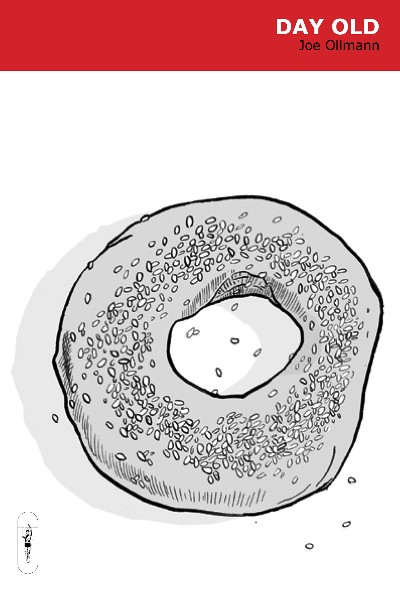
Getting artists to sign on was in some ways difficult because they had no idea what I was talking about. Of course, Joe was #1. But now there are 10 printed and 5 more signed and on the way, so the ball is rolling. It is a great way to package short stories from new creators (often from their Instagram feeds), or chapters from forthcoming graphic novels, but also to reprint archival work in a new format. Valium was a great example of this. I took his graphzine Maladies, printed in France in the 1990s, and reformatted it in English. He passed away just as it was going to print.
AO: The last couple of years have been incredibly tough for both comics publishers and retailers. It’s an obvious question but no less a valid one for that – how did you have to adapt to the constraints and challenges caused by the pandemic?
BROWN: I may answer this differently than most, because so much of my time is spent with my three teen boys and my wife, who is a writer. We live a pretty isolated existence in a small town in a bucolic setting. We had the Atlantic bubble so no one got in or out of Nova Scotia. So my life remained the same but without the pressures of endless activities and driving. I was able to go into my office, since it was just me, and work almost as normal. I got a lot done actually, including personal writing projects.
From Veronica Post’s ‘Langosh & Peppi: Fugitive Days‘
But we quickly pivoted to online launches and events, and people really supported their indie bookstores, and due to our distribution all of it was still operating behind the scenes, it was “almost” business as usual. Credit to our funding bodies as well, who waived applications and made payments quickly. However, in the second year, things became much more difficult. Our website was hacked, sales were down as the book buying public was burned out. We are trying to take advantage of in person events being back since that is a big part of our sales and marketing, but we are also trying to use the knowledge of those digital initiatives moving forward. We are recovering.
AO: One of Broken Frontier’s core aims is to provide a platform for work by and about marginalized voices so could you give us some background on Conundrum’s annual bursary initiative?
BROWN: As we all know the events in the US put the voices of Black individuals on centre stage. At the same time here in Canada we are still processing the discovery of mass graves of Indigenous children at residential schools. As a straight white man, with the lifetime of privilege that entails, I sat back and listened, which I felt it was my job to do. I read more books from Black and Indigenous authors. But when it came time to make an official statement, such as “Conundrum supports Black Lives Matter”, I felt that just posting a statement on social media was falling far short of what I could and should do.
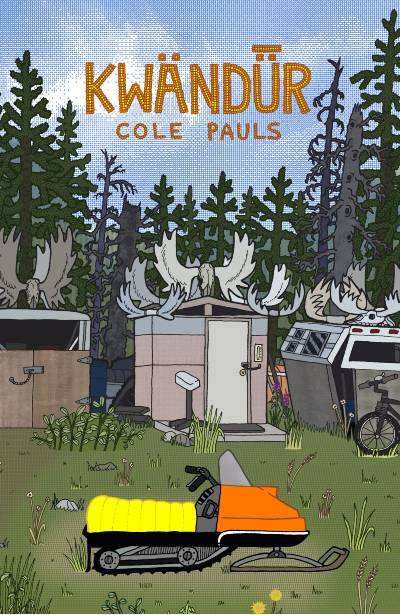
‘Kwändǖr‘ by Cole Pauls
I receive funding from a government which is partially culpable for many injustices, so I figured I could transfer some of that into the hands of the oppressed themselves. Basically, put my money where my mouth is. It is a very small gesture, and a small amount of money. But I have been pleasantly surprised at the results of the bursary announcement. Not only has there been two amazing winners, who we feature at TCAF, but I have discovered talent through the process, for whom I am working on full graphic novels. Two of these are books from Indigenous women that would not exist otherwise. Though their talent would emerge in other forms I’m sure, I am giving them the opportunity to showcase what they can do in the graphic novel field, in which BIPOC artists have been horrendously under-represented (at least in Canada).
AO: Something that often goes uncelebrated in comics commentary is the role of the translator. A mediocre translation can, of course, suck the life out of the finest work. In terms of French language material how do you approach that vital but oft forgotten aspect of comics publishing?
BROWN: I am blessed to know and work with two translators who are among the best in the field, Helge Dascher and Aleshia Jensen. Helge has translated all of Michel Rabagliati’s books, who is an institution in Quebec and becoming better known outside of it. Aleshia has been nominated multiple times for translation awards, often for prose and comics at the same time! Not only do they navigate the specific challenges of translating comics (space constraints in speech bubbles, onomatopoeia) but are able to make suggestions and sometimes give editorial input. I have enormous respect for their opinions, and although I read French, I do not pick up the subtleties. As a bonus, Helge translates German as well, which opens up another amazing talent pool, like Anna Sommer, for example.
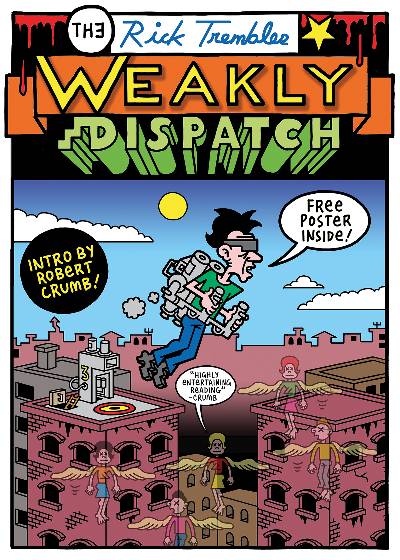
AO: You’re making a trip to the UK this November. How are you hoping to push the Conundrum Press philosophy when you’re over here?
BROWN: Yes! I got a grant from the province of Nova Scotia to travel to Thought Bubble and expand marketing efforts in the UK. I’ve been represented at Lakes a few times, but this will be the first time at Thought Bubble. I’ll be visiting shops too if you have any suggestions. I think graphic novels are under-represented in the UK. Of course, there is SelfMadeHero and Avery Hill and lots of fantastic creators but it seems like the general public may be a few steps from embracing the field.
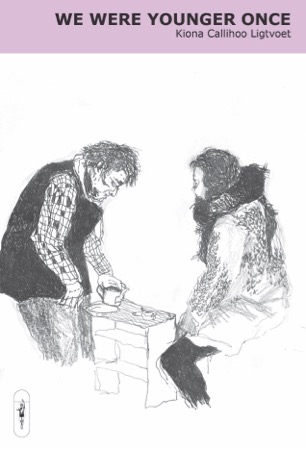 AO: And, finally, what can we expect to see from Conundrum Press coming into 2023? Are there any teasers you can give us about next year’s publishing schedule?
AO: And, finally, what can we expect to see from Conundrum Press coming into 2023? Are there any teasers you can give us about next year’s publishing schedule?
BROWN: Well, I can start with the two Indigenous artists I mentioned earlier. We just published We Were Younger Once by Cree artist Kiona Ligtvoet in the CONUNDRUM 25 series. And Zeta Paul is a young Mi’kmaw artist with a lot of talent who is working on a graphic novel called Borderlines for 2024.
But next year we will feature the 10th anniversary expanded edition of Nina Bunjevac’s Heartless, which was her first book, before her award-winning graphic novel Fatherland came out with Jonathan Cape. Also, the second in the series of the award-winning Langosh & Peppi books from Veronica Post, this time travelling through the USA. Chris W Kim has had two books with SelfMadeHero but we will publish his third, Adherent, which is amazing. He is from Toronto. Kettle Harbour by Kyle Vingoe-Cram puts the “novel” back in graphic novel. It’s about a complex love triangle in a small Nova Scotia town. Serbo-Canadian Ivana Filipovich has expanded a short story into her first graphic novel set in the criminal underworld of Vancouver drawn in a style reminiscent of Europeans like Blutch.
Long term, look for the Complete Comics of Henriette Valium, for which we will announce a Crowdfunding campaign with the support of his family. And, of course, the box set of CONUNDRUM 25 coming in 2026.
But first, hope to see everyone at Thought Bubble.
Visit the Conundrum Press site here
Interview by Andy Oliver
Top BF logo by Joe Stone





